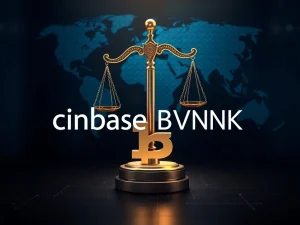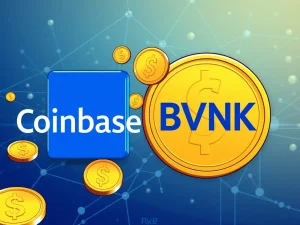Revolutionary ‘Gas Free’ USDt on Tron: A Bold Move to Slash Transaction Fees

Get ready for a seismic shift in the crypto world! Tron, a blockchain known for its speed and scalability, is poised to unleash a game-changing feature next week that could redefine how we transact with Tether (USDt). Imagine a world where sending USDt on Tron is as simple and cost-effective as sending an email – that’s the promise of Tron’s upcoming ‘Gas Free’ feature. But what does this mean for you, for Tron, and for the broader crypto landscape? Let’s dive into the details of this exciting development.
The Pain Point: Skyrocketing USDt Transaction Fees on Tron
For a long time, Tron held the crown as the most affordable blockchain for moving USDt. Its low transaction fees were a major draw, making it a favorite for traders and users alike. However, as the crypto space evolved and network demands fluctuated, things changed. Data from Tether itself revealed a concerning trend: Tron’s USDt gas fees had surged, shockingly exceeding $9 in late 2024. This spike effectively eroded Tron’s competitive edge in terms of cost. Suddenly, the blockchain that was once synonymous with cheap USDt transfers became significantly less attractive for everyday transactions.
Think about it – if you’re sending a small amount of USDt, a $9 fee can be a substantial percentage of your transfer. This increase in transaction fees not only inconvenienced users but also potentially hindered the wider adoption of USDt on the Tron network. The need for a solution was clear, and Tron seems to have answered the call with its innovative ‘Gas Free’ initiative.
Introducing ‘Gas Free’ USDt on Tron: A Revolutionary Solution
Enter the ‘Gas Free’ feature – a bold and potentially revolutionary step by Tron to reclaim its position as the go-to blockchain for affordable USDt transfers. While details are still emerging, the core concept is incredibly enticing: users will soon be able to send USDt on Tron without incurring traditional gas fees. This is not just a minor tweak; it’s a fundamental shift in how transactions will be processed on the network, specifically for Tether’s widely adopted stablecoin.
This move is a clear signal that Tron is listening to its community and is committed to maintaining its user-friendly and cost-effective ecosystem. By eliminating gas fees for USDt, Tron is directly addressing the pain point of high transaction fees and making a powerful statement about its dedication to accessibility and affordability in the crypto space.
Unlocking the Benefits: What Does ‘Gas Free’ USDt Mean for You?
The implications of ‘Gas Free’ USDt on Tron are far-reaching and potentially transformative. Let’s break down some of the key benefits:
-
Significantly Reduced Costs: The most obvious benefit is the elimination of gas fees. This translates directly to cost savings for anyone sending or receiving USDt on Tron. Whether you’re a casual user, a frequent trader, or a business accepting crypto payments, the ‘Gas Free’ feature can substantially reduce your operational expenses.
-
Increased Accessibility: High gas fees can be a barrier to entry for new crypto users, especially those dealing with smaller amounts. By removing this barrier, Tron is making USDt more accessible to a wider audience, fostering greater inclusivity in the crypto ecosystem.
-
Faster and Smoother Transactions: While not explicitly stated, ‘Gas Free’ transactions could potentially lead to even faster confirmation times. Simplified transaction processes often translate to quicker processing, enhancing the overall user experience.
-
Boosted Tron Ecosystem: This feature is likely to attract more users and projects to the Tron network. Lower costs and increased usability can make Tron a more appealing platform for decentralized applications (dApps), decentralized finance (DeFi) protocols, and various other crypto ventures.
-
Competitive Edge: In a crowded blockchain landscape, differentiation is key. The ‘Gas Free’ USDt feature gives Tron a significant competitive advantage, potentially attracting users and liquidity from other networks where transaction fees remain a concern.
How Might ‘Gas Free’ Tron Work? Speculating on the Mechanism
While official details are still pending, we can speculate on how Tron might implement this ‘Gas Free’ feature. Here are a few possibilities:
-
Fee Abstraction: Tron might be implementing a form of fee abstraction, where transaction fees are covered by a different mechanism, perhaps subsidized by the network or through other operational efficiencies. This could involve smart contract innovations or changes to the network’s consensus mechanism.
-
Staking or Resource Model Adjustments: Tron utilizes a resource model (bandwidth and energy). It’s possible that the ‘Gas Free’ feature involves adjustments to this model, perhaps allowing users to utilize staked TRX or other network resources to cover USDt transaction fees in a more efficient way.
-
Layer-2 Solutions: While less likely for a core feature, it’s conceivable that Tron might be leveraging a Layer-2 solution specifically for USDt transactions to achieve gas-free transfers. However, given the announcement’s emphasis, a more integrated, Layer-1 solution seems more probable.
Regardless of the technical implementation, the outcome is what truly matters – and that’s the prospect of seamless, gas-free USDt transactions on Tron.
Is Tether USDt Gas Free on Tron a Game Changer for Crypto Adoption?
The launch of ‘Gas Free’ USDt on Tron has the potential to be a significant catalyst for wider crypto adoption. Here’s why:
-
Simplifying User Experience: Gas fees can be confusing and off-putting for newcomers to crypto. Removing this complexity makes using USDt and the Tron network significantly more user-friendly, encouraging broader participation.
-
Boosting DeFi and dApp Usage: Lower transaction fees are crucial for the growth of DeFi and dApps. ‘Gas Free’ USDt can make Tron a more attractive platform for developers and users in these burgeoning sectors, fostering innovation and expansion.
-
Enhancing Real-World Use Cases: For crypto to truly go mainstream, it needs to be practical for everyday transactions. ‘Gas Free’ USDt on Tron makes it more viable for micropayments, remittances, and various real-world applications, bringing us closer to a future where crypto is seamlessly integrated into daily life.
-
Setting a New Standard: Tron’s move could pressure other blockchains to explore similar ‘Gas Free’ or low-fee solutions, driving innovation across the entire crypto space and ultimately benefiting users everywhere.
Conclusion: A Bold Step Towards a Fee-Less Future
Tron’s impending launch of ‘Gas Free’ USDt is a bold and exciting development. By tackling the issue of transaction fees head-on, Tron is not only enhancing its own ecosystem but also contributing to the broader goal of making crypto more accessible and user-friendly for everyone. As we eagerly await the official launch next week, one thing is clear: Tron is making a powerful move to shape the future of USDt and potentially the entire crypto landscape. This ‘Gas Free’ revolution could be just the beginning of a new era of frictionless and affordable digital transactions.







